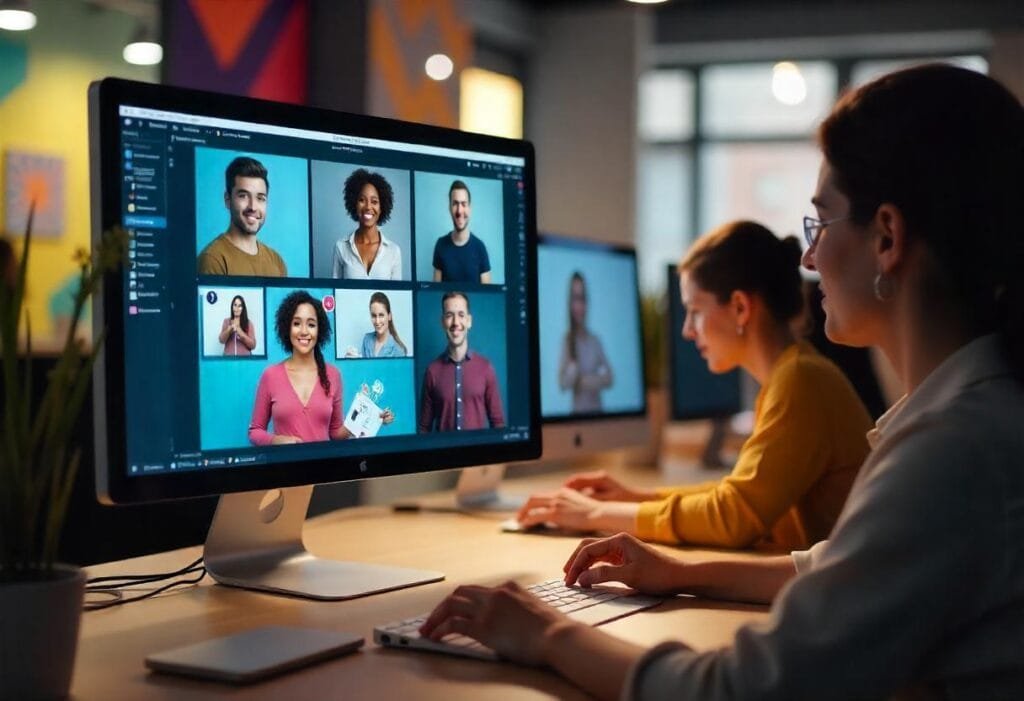In recent years, the world of content creation has witnessed a massive shift with the introduction of advanced AI tools. These tools are transforming how creators, marketers, and businesses approach content generation, providing innovative solutions to streamline the process and enhance creativity. Among these tools, AI-driven image-to-video generators are leading the charge in revolutionizing content creation. By seamlessly converting static images into engaging videos, these tools are enabling content creators to unlock new levels of creativity, efficiency, and visual storytelling.
The Rise of AI Image to Video Generators
AI technology has evolved at an exponential rate, bringing remarkable advancements in various industries. In the world of content creation, one of the most exciting innovations is the ability to turn static images into dynamic videos. An AI image to video generator is a powerful tool that leverages artificial intelligence to automatically create video content from images. Whether it’s a single photo or a collection of images, these tools analyze the visual data and generate a video sequence that can be used for a wide range of applications, from social media posts to advertisements.
Traditionally, creating video content required a significant amount of time and technical skill, with creators needing to carefully edit and animate each image. AI-powered image-to-video generators, however, simplify this process by automating many aspects of video production. This not only saves time but also opens up possibilities for creators who may not have video editing expertise. The result is content that is visually dynamic and engaging, offering a richer experience to audiences.
The Technology Behind AI Image to Video Generators
At the heart of AI image-to-video generation is deep learning and computer vision. These technologies allow the AI to recognize patterns, understand the context of images, and even apply motion effects to create a video-like experience. Through training on vast datasets of images and videos, AI models learn how to manipulate and combine visual elements in ways that mimic human creativity. The outcome is the automatic generation of videos that can convey a narrative or simply bring images to life in an engaging way.
This technology works by detecting key features within the images, such as objects, faces, and backgrounds. It then applies motion effects, transitions, and even sound to create a cohesive video. By analyzing how different elements in the image relate to each other, the AI can also add depth, perspective shifts, and animations that make the video feel more natural.
Why AI Image to Video Generators Are Game-Changing
The impact of AI image-to-video generators is far-reaching. Here are some key reasons why they are changing content creation forever:
1. Time Efficiency
Creating high-quality video content traditionally involves several steps, including filming, editing, and animating. For creators with limited time, this process can be daunting. AI image-to-video generators drastically reduce the time required to produce a polished video. With just a few clicks, images are transformed into compelling videos, allowing content creators to focus on other aspects of their work.
2. Accessibility for Non-Experts
In the past, video production required specialized skills and tools. Today, AI-powered tools are making video creation more accessible to individuals who may not have formal training in video editing. By automating much of the creative process, these tools empower anyone to create professional-looking videos with minimal effort. Whether it’s a social media influencer or a small business owner, anyone can leverage this technology to enhance their content.
3. Enhanced Creativity and Customization
While AI tools handle much of the technical work, they still allow room for creative input. Many AI image-to-video generators offer customization options, enabling users to adjust the pacing, visual style, and transitions of their videos. This flexibility ensures that the final product aligns with the creator’s vision while saving time on manual adjustments.
4. Consistency Across Content
For brands and marketers, maintaining a consistent visual style across content is crucial for building recognition and trust. AI image-to-video generators help streamline this process by creating videos that are consistent in style, transitions, and effects. With AI handling the repetitive tasks, content creators can focus on producing high-quality visuals that resonate with their target audience.
5. Cost-Effectiveness
Professional video production can be expensive, especially for small businesses and independent creators. With AI-driven image-to-video generators, there’s no need to hire a video production team or invest in expensive software. These tools offer a more affordable solution, democratizing the video creation process and making it accessible to anyone with a creative vision.
Practical Applications of AI Image to Video Generators
AI image-to-video generators are being used in various sectors to enhance content creation and improve audience engagement. Some key applications include:
Social Media Content Creation
With social media platforms becoming increasingly visual, video content is king. AI-generated videos allow creators to transform their image-based content into more engaging formats, such as Instagram Stories, TikTok videos, or YouTube shorts. These tools can automatically add music, captions, and effects, making it easier for creators to produce high-quality content that captures the attention of their audience.
Marketing and Advertising
In the competitive world of digital marketing, capturing your audience’s attention quickly is essential. AI image-to-video generators are increasingly being used to create promotional videos, product demonstrations, and advertisements. These videos can be easily customized to fit a brand’s unique style, making them more effective in communicating key messages to potential customers.
Educational and Informational Content
Visual aids are essential in educational content, and AI-generated videos are becoming a go-to resource for educators and content creators. By transforming static images into animated videos, instructors can better explain complex concepts or provide visual examples. This makes learning more engaging and helps improve information retention.
E-commerce Product Visuals
For e-commerce businesses, showing products in motion can have a significant impact on sales. AI image-to-video generators can turn static product images into videos that demonstrate the item in use, highlighting its features and benefits. This helps customers visualize the product better, leading to increased confidence and conversion rates.
The Role of AI Video Apps in Content Creation
While AI image-to-video generators are powerful on their own, they are often integrated into larger ecosystems that include AI video apps. An AI video app brings together multiple features for content creation, such as video editing, animation, and special effects, all powered by AI. These apps enable creators to access a range of tools in one place, enhancing their ability to produce dynamic content quickly.
For instance, AI video apps allow creators to add voiceovers, edit audio tracks, and adjust video length. Many apps also offer templates (without explicitly calling them templates) that help users create professional-looking videos even without experience in video production. The combination of AI-generated images and the versatile features of these apps ensures that the content creation process is streamlined and accessible.
Challenges and Ethical Considerations
Despite the many benefits, the use of AI in content creation comes with its own set of challenges. One of the key concerns is the potential for misuse. AI-generated content can easily be manipulated to deceive or misinform, leading to issues such as deepfakes or misleading advertisements. As these tools become more advanced, ensuring that ethical guidelines and regulations are in place will be crucial to prevent harm.
Another challenge is the risk of over-reliance on AI tools, which could lead to a lack of original creativity in content creation. While AI can enhance creativity, it’s essential for creators to maintain their unique voice and vision to avoid content that feels formulaic or repetitive.
Conclusion
AI image-to-video generators are reshaping the way content is created and consumed. By automating the video creation process, these tools are saving time, enhancing creativity, and making professional-quality video production accessible to everyone. Whether for personal projects, marketing, or education, AI-driven video content is poised to become an integral part of content creation strategies in the future. As technology continues to evolve, we can expect even more exciting innovations that push the boundaries of what’s possible in the world of content creation.


